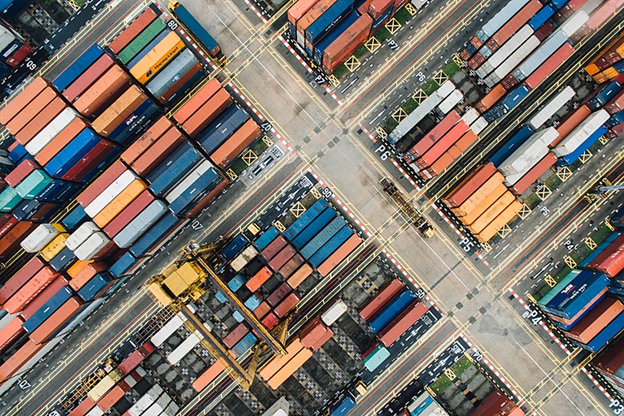1.1 – Introduction to Welcome to Economics

Understanding Economies
The image above is of a shipping yard. You may never have visited one, but they’re everywhere. They’re part of the vast network of economic relationships that take from us our time and our energy, but also deliver to us our sustenance and enjoyment. The 21st century world economy is truly a marvel, generating in 2020 about 85,110,000,000 US dollars of output, according to the World Bank. Despite this material prosperity, the world allowed over 700,000,000 people to wallow in extreme poverty. And the world produced 34,344,006,000 tons of carbon dioxide (in 2019).
How does this meshwork of machines and workers, managers and software, money and governments work? What are its impacts, good and bad?
Chapter Objectives
In this chapter, you will learn about:
- What Is Economics?
- Microeconomics and Macroeconomics
- Basic Features of Capitalism
- The Rise of Globalization
Consider for a moment all the goods and services you’ve consumed throughout your life–from the medical staff that ushered you through the birth canal to the diapers, educational services, quickly shrinking clothes; to perhaps your first car or your quinceañera dress; to your college textbooks and, if you’re so fortunate, the roof over your head at night. Where did all these things come from? Why did you have these things while others did not (or, thinking in reverse, why did other people have them, but not you)? How does your material well-being compare to your parents? How does your material well-being compare to those in other countries or other historical periods? How do, and will, you fit into this gargantuan system or production, distribution, and consumption? How will it affect the lives of future generations and ecosystems?
Okay, let’s not get carried away here–those are enough questions to make one’s heads spin–but also to jump start a conversation about what economics is. Economics is the study of all of these things, and more.
But, as you might imagine, there are no simple answers to any of these questions. This textbook was written only to introduce you to this subject. And while an introduction necessarily means a simplification of the true complexity of the field, we want to be sure you keep in your mind one thing above all as you work through this text: there are many ways to try to understand the society in which you live. Some are better and some are worse, and you are free to develop your own opinions on which is which as you read on. This textbook has been developed to show you a variety of questions and tentative answers to all sorts of topics–but not to tell you which of these are appropriate or correct. Only you can decide that.
This chapter will introduce you to the subject of economics in the most general terms. The three chapters that follow it will then move into the different ways that economists go about trying to understand economies. As you’ll see, economics is not a settled science, nor is it a monolithic one. Understanding the diversity of approaches to studying economies is the fundamental goal of this book. We hope you’ll ultimately agree that it is, indeed, a worthwhile goal.
References
World Bank data:
GDP: https://data.worldbank.org/indicator/EN.ATM.CO2E.KT
C02 emissions: https://data.worldbank.org/indicator/EN.ATM.CO2E.KT
Poverty: https://www.worldbank.org/en/publication/poverty-and-shared-prosperity
